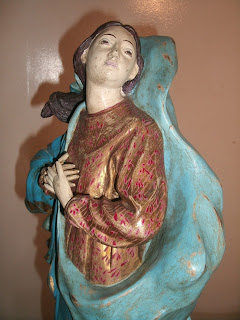Buying
original Art.I.
When
you are looking for a painting that you will love and enjoy living
with for many years, here are some thoughts on buying.
I
cannot say this enough, do not be rushed into the sale.
Buy
your painting, not from a sales person, but from someone who loves
Art, and sells it for a profession.
Do
not let sales people or the urgency of an Auction rush you into
buying, if you miss it then it was not meant to be.
I
have people bring me paintings that they bought in the excitement and
feeding frenzy of the auction or from sales pressure and find they
have spent to much for the painting and now they cannot even sell it
for what they paid for it.
I
say all of this just to caution you.
Buy
the Art work because you love it.
Buy
the Art work from someone who loves Art and is not just a sales
person.
Buy
work you have thought about and have not been rushed into the sale.
Buy
work the gives you good value for your money.
Buy
work that will bring you joy for many years.
Happy
collecting.
Buying
original Art, II.
First
of all, the number one reason for buying a painting and collecting
Art, you buy it because, you love it.
Research
the paintings you like, find out all you can about it.
Once
you have an idea of the value of the paintings, begin to search out
the paintings in the Galleries or Auction houses of your choice.
Set
a budget and stick to it, especially at an auction.
At
a Gallery check out the best price you can and never be afraid to
walk away, after all it is just a painting.
When
you love paintings and sculpture, it will consume your life,
therefore everyone who buys a work of art, wants to go from the
transaction happy and satisfied that they got a good and fair deal.
If
we are all happy with the outcome then the world is a nice place.
I
want my collectors to love the work of Art that they have purchased
and to want to live with it and it is my hope and desire that the
painting or sculpture that they purchased will bring them lots of
joy.
Collecting
is a wonderful pursuit that can bring the collector much joy and
happiness.
Happy
collecting.
Mark
Shellshear.
Maybe
you have never bought an original painting from an Art Gallery?
Buying
original Art III.
When
you consider purchasing a painting, an original piece of Art,
remember
our first point, buy what you love.
The
painting or sculpture that you are buying, is something quite unique,
the work of a talented Artist that will increase in value over your
lifetime.
You
will become the owner of a work of Art, an original one of a kind
piece, originating out of the creative life of the artist.
Demonstrating
all the insight, the feelings, the trials and the Artists
interpretation of how they see their world and their expression of
it.
When
you buy a work of Art you are buying into the life of the Artist and
in a way you are getting some of the Artist in the purchase, all that
the Artist has put into the painting and the journey that the Artist
has been on to get to that place where they have able to paint this
particular work.
Part
of the Artists journey of
discovery is revealed within the particular
work you purchase.
Happy
collecting.
Mark
Shellshear.
Buying
original Art IV.
Buying
an original painting is so much more significant than a photographic
print of a painting which there could be hundreds of copies produced.
An
original painting gives you a part of the artists life, you are
buying into a moment of time in the Artists life, when at this point
of their career this painting was completed.
It
is very significant for collectors to grasp this idea of the Artist
being able to complete a certain painting at a certain moment in time
and then as that moment passes they move onto the next painting,
leaving this legacy of that moment in time.
Paintings
are like the life markers of the Artists life, they point to a
certain time and only that time in the Artists life, as the Artist
has since moved on.
Buying
original Art is buying into the Artists life.
Happy
collecting.
Mark
Shellshear .
Buying
original Art V.
When
buying an
original
painting, you must choose the one which you truly love and can
imagine seeing it on the wall of your home. You
need to imagine yourself
living with this
painting and
asking
yourself will it bring me and my family joy
and all those
who
see it.
Beautiful
original paintings come at a price.
A
high price is no guarantee that your purchase will be a good
investment, so buy what you love and consider it in the long term as
you will be living with the painting for many years.
When
hung on your wall, an original painting will transform a room,
altering the space around it, a painting is so much more than just an
image in oil or acrylic on canvas or a piece to match the decor. The
painting must enhance the space and demand attention, it is the focal
point of the room.
It
is the unique expression of the Artist, it is a statement of their
creativity, at a certain moment in time in their life and their
individual vision of the world that they lived in it at that
particular time and it is a one of a kind, something very special.
Buying
your first painting can be a lot of fun and it will bring you joy and
satisfaction and could be the beginning of your own collection of
beautiful art works.
Happy
collecting.
Mark
Shellshear .











































